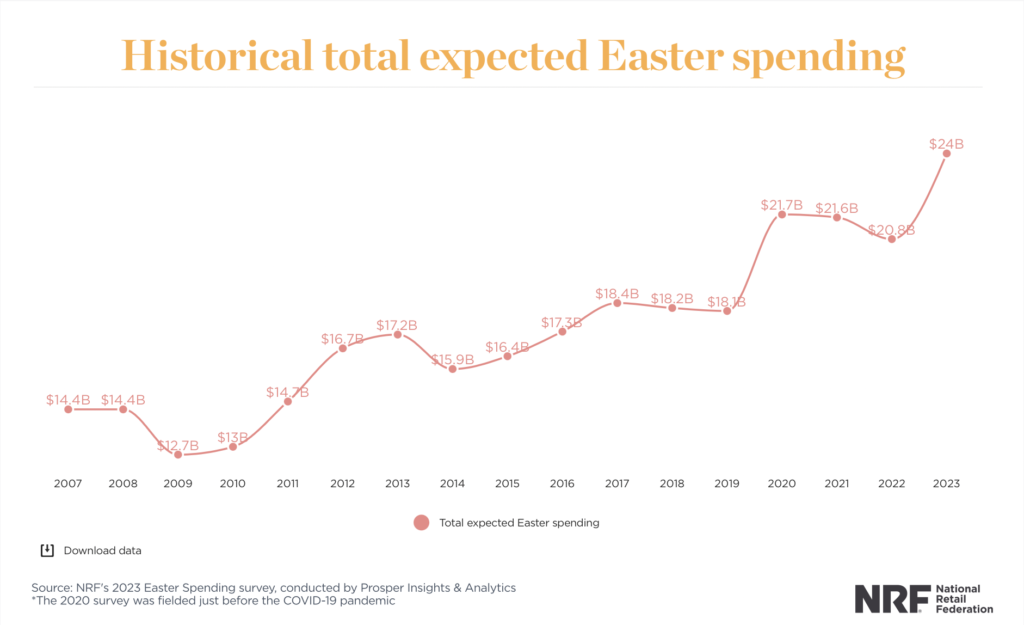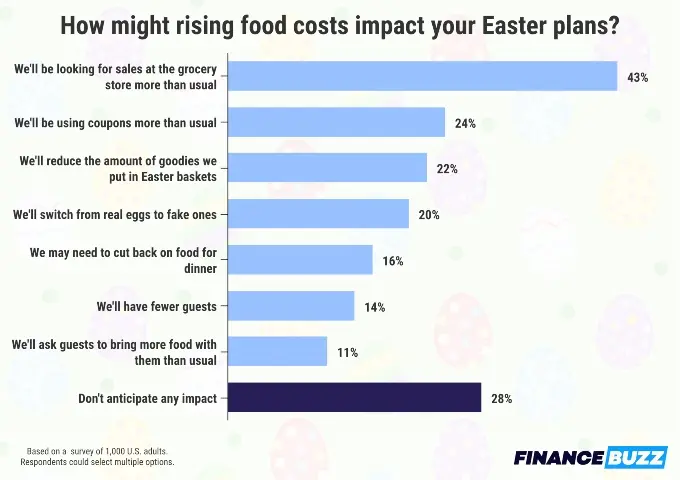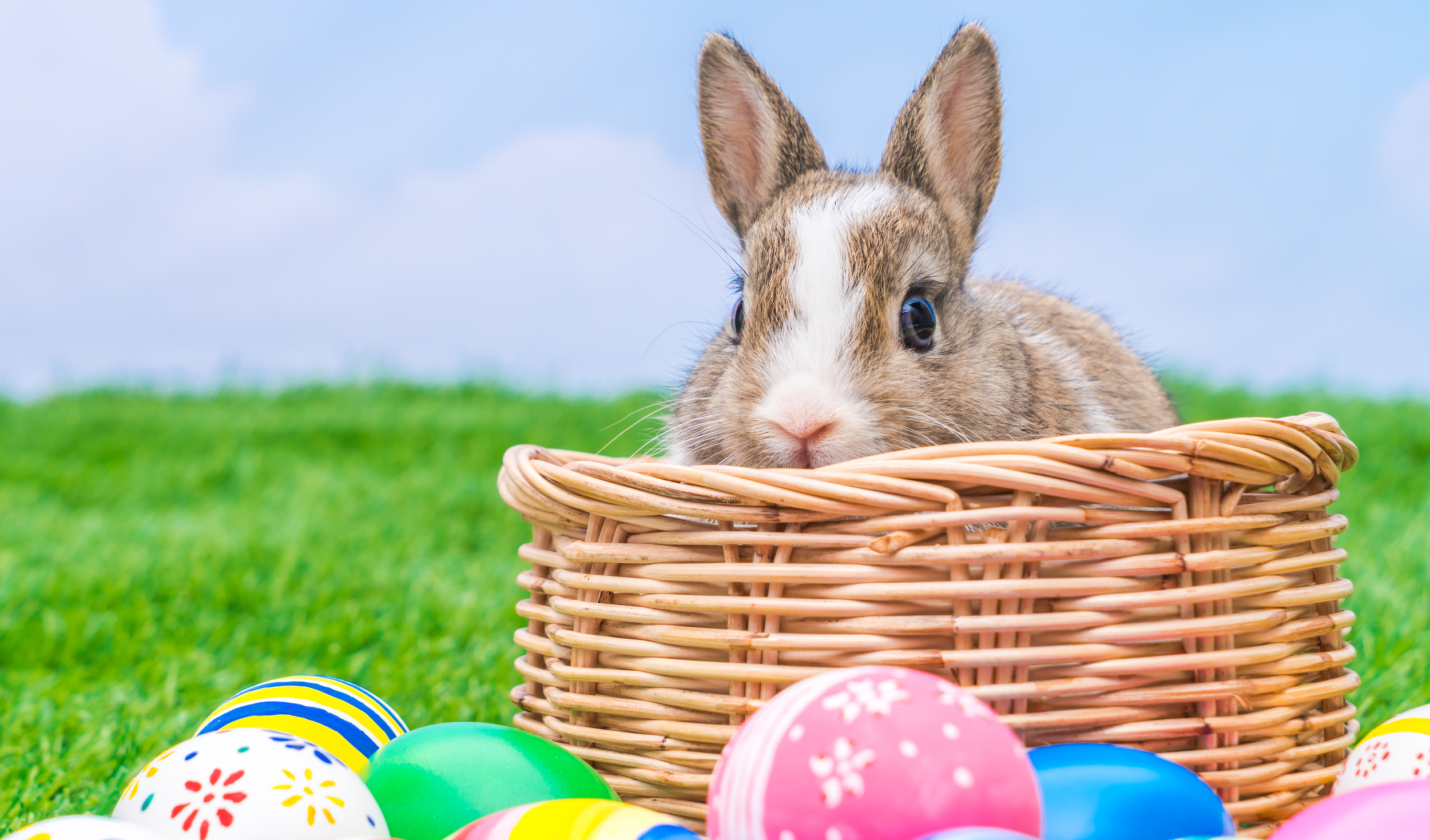Even though consumers are facing high prices surrounding spring holiday traditions, they are still planning to spend more than ever.
This year, Easter is April 9. Passover is from April 5 to April 13. Both typically involve big family gatherings and meals. Not to mention the rest of the “stuff” associated with Easter – the baskets, the eggs, the hats, the clothes, etc. Some retail observers were concerned that inflation, especially of food costs, would negatively affect spending for these holidays. But, the National Retail Federation says otherwise.
The NRF and Prosper Insights & Analytics estimate that consumers plan to spend a collective $24 billion on Easter this year, up from $20.8 billion in 2022 and the previous record high of $21.7 billion in 2020. Eighty-one percent of Americans will celebrate the holiday and spend an average of $192.01, the highest figure on record.

Spending is growing across several categories, and the top Easter items consumers say they are planning to purchase include candy ($3.3 billion), gifts ($3.8 billion) and food ($7.3 billion). Consumers are also expected to spend $4 billion on clothing, $1.8 billion on flowers and $1.7 billion on decorations, along with $1.1 billion on greeting cards.
As in previous years, most consumers (54%) say they will buy Easter gifts from discount stores. Other shopping destinations include department stores (42%), online (33%), local and small businesses (22%), and specialty stores (20%).
Even half of those not celebrating the holiday still plan to take advantage of Easter-related bargains. They anticipate spending $23.41 per person and are primarily looking to purchase candy and food.
Yet, when it does come to food, 72% of people say rising food costs will, in fact, impact their Easter plans, according to Finance Buzz. But that does not necessarily mean they will spend less. It just means that they may be shopping more mindfully and carefully, utilizing savings where they can.

If you are a marketer, here are some bits of advice for the spring holidays:
- Find ways to engage customers. Encourage user-generated content, add videos, create a holiday gift guide or host a holiday-themed event, even if it’s virtual.
- Show how you can make the holiday better. What can you offer to make things easier? What can customers gain from you? Perhaps recipes or easy to follow tutorials serve this purpose.
- Celebrate with a product launch or tweak the packaging to reflect the holiday. People are already looking for gifts and new products to buy and this will garner attention.
- Launch campaigns that celebrate togetherness. This always works for family gatherings, especially now in our post-pandemic world as people cherish the time they get to spend with loved ones.
- Offer discounts. You can never fail with a good ol’ coupon or deal.
It will be interesting to see the actual numbers after the spring holidays. Will spending be in line with the NRF’s estimates? And if so, will it be just because everything costs more? Or is it a true willingness on the part of the consumers to pay more and buy more?



